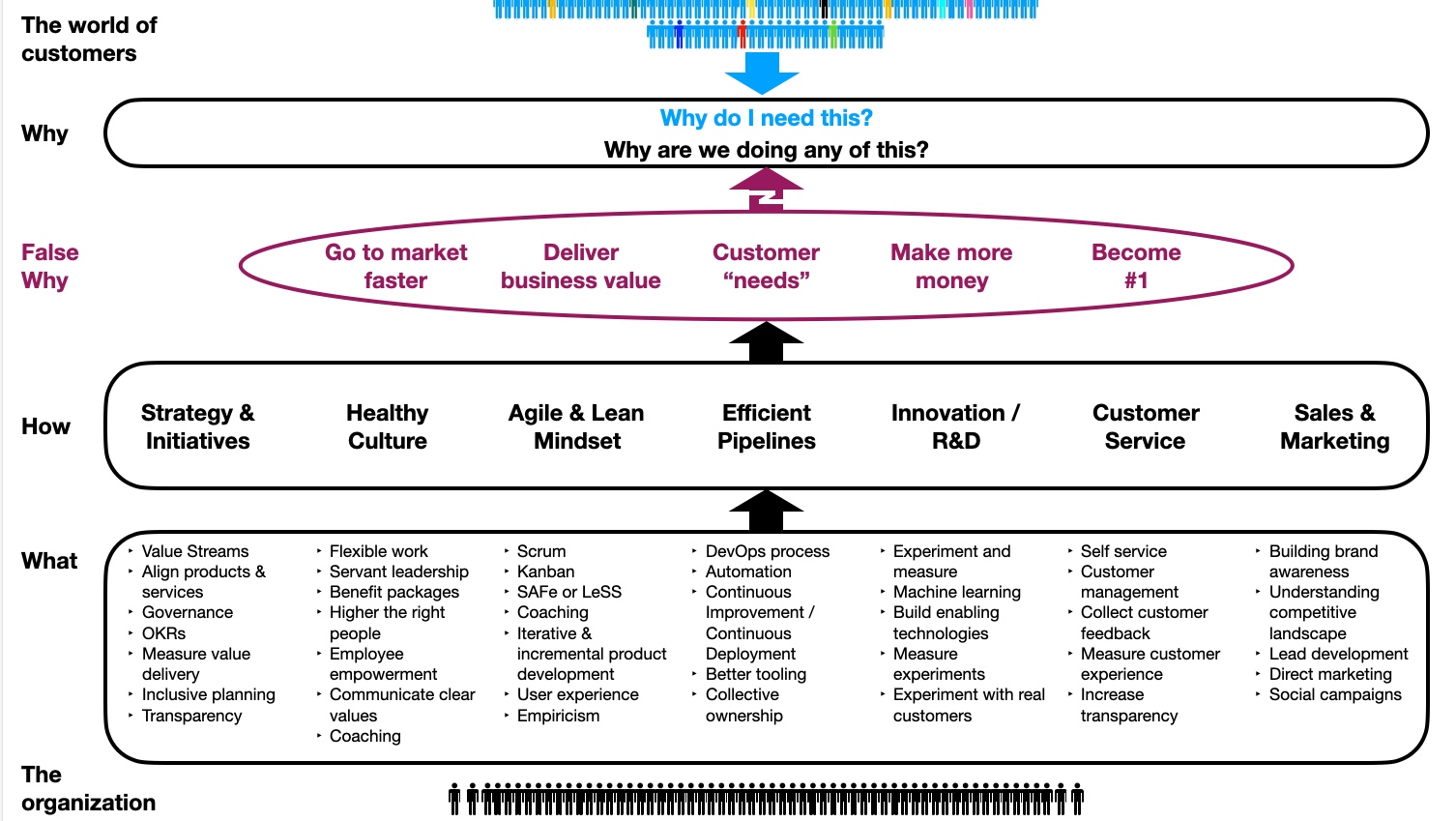The Dominant FALSE WHY and the Elusive TRUE WHY
Simon Sinek’s book Start With Why certainly changed my perspective on many things relating to purpose, mission, vision and values. His book has positively influenced my personal life as well as my professional life.
One of the core concepts of his book is the Golden Circle, where he tells readers about the importance of communicating from the inside out… starting with “why”, instead of “how” or “what”. (It might be worthwhile to take a look at his TED talk on this).
Starting with Why was something I could easily translate to product development. Recently, I started thinking about how this concept ties into the Build-Measure-Learn Feedback Loop I learned from Eric Ries’s book The Lean Startup.
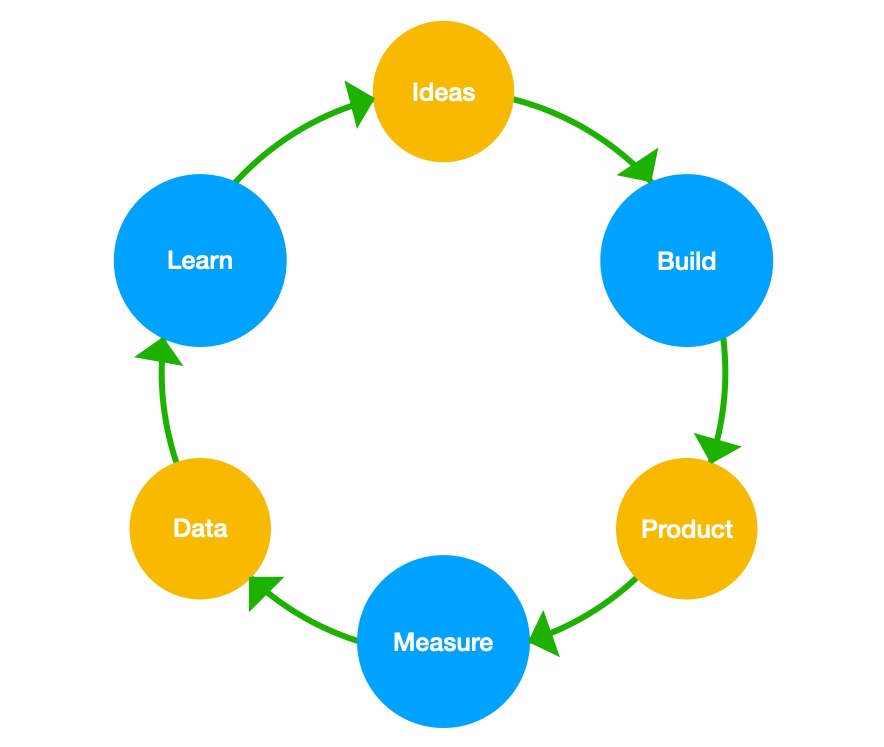
With the Build-Measure-Learn Feedback Loop above, a team can make an assumption (idea) and build that product and gather feedback about it, which feeds the cycle again. In this way, the team can deliver value incrementally and iteratively, while using an empirical approach.
Most companies do this well, and this not so well
Most companies invest a lot of money and resources in the “Build->Product->Measure->Data” part of the cycle (below in the green area), and do those things fairly well. The information we “learn” is necessary to feed the next set of “ideas” in the loop (in the red area), but many don’t follow through well on what they learn. There seems to be a disconnect between “Learn” and “Ideas” (the red part) and the rest of the loop (the green part), or there is less of an investment in this part of the business, which gives it less priority and focus.
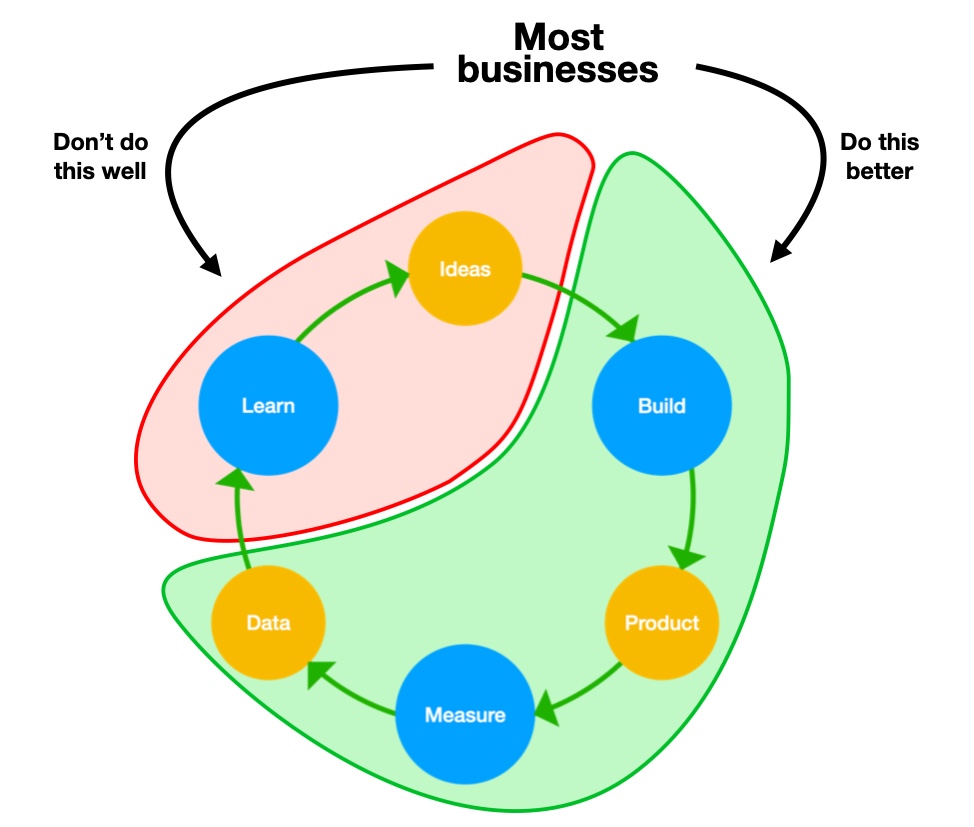
Assumptions of alignment
The product loop assumes that we get the feedback from the people we should be getting it from. What if we are asking the wrong people? What if we are measuring the wrong things? In some ways, the bigger drivers of this loop actually sit outside the loop. In other words, why are we building this product at all?
It is important to consider whether or not our “ideas” are really even aligned to our greater purpose as an organization.
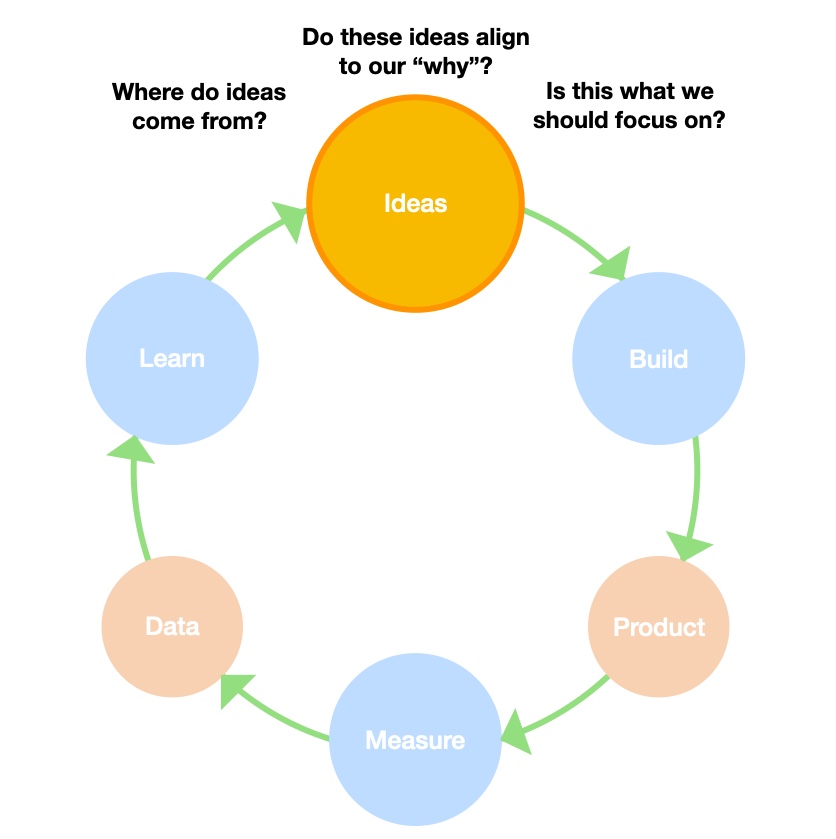
Every company needs to know why they do the things that they do. Every product needs to have some purpose in the market, and some value to the customers.
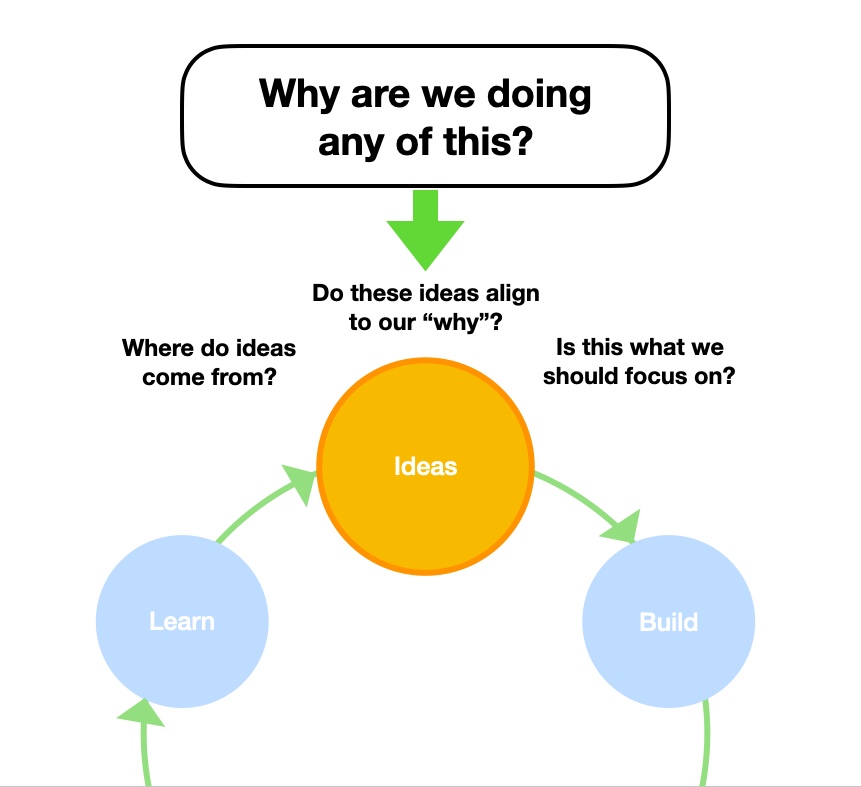
The False Whys
I started to observe that many organizations believe that they have identified their “why”, but in actuality, they have not. What they end up identifying are false “whys”. One could even label them as “Vanity Whys”. False whys or vanity whys may mean a lot to the business, but probably don’t mean that much to the customer. Through these vanity whys, the business and the customers become further disconnected.
Some examples of vanity whys or false whys are: getting to market
faster, delivering more business value, making more money, becoming the
number 1 player in the market, etc.
A company can build teams and products that align to a set of goals, missions, strategies or initiatives (false whys). In many ways, they become the driving forces behind the work and †he focus on product delivery. They even get measured through various metrics, such as OKRs, etc.
Let’s look at an example. If your false why is “increase revenue”, there could be dozens of reasons why we want to increase revenue: 1.) Expand our business to new markets; 2.) Drive up dividends; 3.) Hire more people; 4.) Fund new innovations, etc. These are excellent outcomes to have as a result of increasing revenue. These outcomes may provide evidence that we are hitting our targets, but how do we know it’s not just a temporary indicator of success?
If we base all of our success on whether we achieved these goals (false whys), i.e. met our OKRs, produced the right metrics, then we may be missing the point all together.
I am not diminishing the value of these goals or even their validity. I am pressing for the importance of knowing WHY you have them to begin with.
If we don’t question why we have these goals, we will never know how to truly measure success in an organization or success for our customers.
How will we know if we are fulfilling the purpose of our business? How do we know we are making a difference in the world?
When a company loses site of its calling – a “false why” sense of security
Let’s look at the realities… Your customers sit outside your organization, and they have needs. Your business was founded with some greater purpose in mind, some greater calling. It is likely that success came to your business because this “calling” matched well with what customers were looking for. The people in this company are connected to the customers through this invisible relationship. In time, many organizations veer off their path of purpose and start worshipping false whys.
When a company loses site of its calling, there is a good chance it will lose its relationship with the customer.
It is likely that most people reading this (if you are working in a tech company for example) will look at the “How” and “What” section above and recognize some or all of those items. You many be directly involved with some of them today.
While these sections are certainly not representative of all areas, they illustrate the likely actions a company may take to deliver a product. Businesses dump a lot of money and resources into these areas, as they should. They do bring value to the business.
It is easy to get a false sense of security in measuring success in the “How” and “What” section above. When we accomplish goals for the hows and whats, we feel good and move on to the next item. We might even get a sense that our ship is sturdy and strong and the crew is tight and harmonized. But, what if we shouldn’t be in a ship at all? What if our real purpose was supposed to be about flight?
The elusive TRUE WHY
So what is the “elusive TRUE WHY” and how do we get one? Simon Sinek wrote an entire book on this, so I’m not going to sugarcoat the challenge this may represent to those seeking one out.
An example of a true why may sound something like this “why” statement from a 2019 interview with Daniel EK, Spotify’s CEO, on Freakanomics Radio podcast:
“To inspire human creativity by enabling a million artists to live off their art and a billion people to enjoy it and to be inspired by it.”
Or this example from Airbnb:
“To connect millions of people in real life all over the world, through a community marketplace– so that you can belong anywhere.”
Both examples above don’t tell us how they are going to do that, they tell us what the outcome is. A true why has to transcend the false and vanity whys. True whys have to be the reason behind the false whys or vanity whys. It has to be a strong force that pulls you and your teams forward like metal shavings to a magnet.
When the work a company does aligns to its values and mission, and all of that aligns to the customer
needs, then the company becomes more authentic and the products and the services reflect that as well.
Pat Guariglia is an agile coach, startup advisor and founder. Find out more about Pat here.
